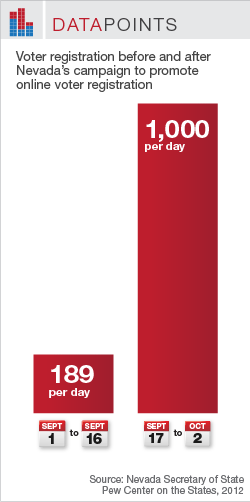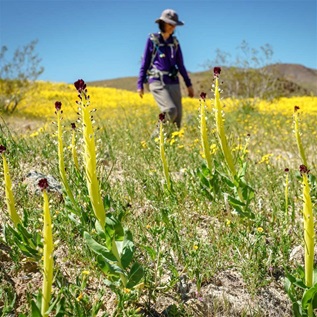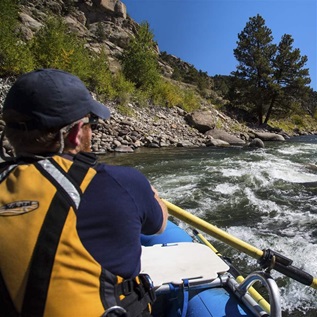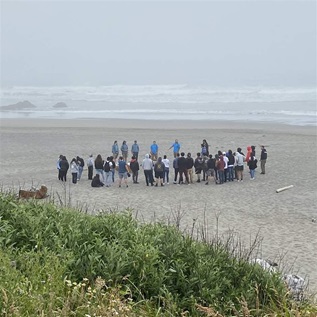States Roll Out and Expand Online Voter Registration, Increase Efficiencies

Since July, four states—California, Maryland, New York, and South Carolina—have introduced online voter registration, bringing to 13 the number of states that currently offer this service. Nevada also recently expanded online voter registration to all voters statewide; it was first used in Clark County in 2010.
In Nevada, new registrations jumped following a campaign to promote online registration, including television and radio ads, meetings with business leaders and students, and promotional outreach for National Voter Registration Day. Further, the state is collaborating with the Electronic Registration Information Center (ERIC), a partnership created with assistance from Pew, that allows participating states—currently Colorado, Delaware, Maryland, Nevada, Utah, Virginia, and Washington—to share registration and other state data (such as motor vehicles information) to improve both their ability to maintain clean voter lists and the efficiency of their voter registration processes.
As part of the ERIC partnership, states can encourage eligible but unregistered voters to sign up to vote in the most efficient way—often online—and at the most efficient time—weeks, rather than days, before registration deadlines—as well as encourage registered voters to use the online system to update their information, when necessary.
- Nevada’s campaign to promote online voter registration began on September 17, and, as of October 2, 15,000 new online registrations had been processed, averaging approximately 1,000 per day, or roughly five times as many as were processed in the first half of the month before the promotion. Then, in the final four days before the state’s October 6 deadline to register online, another nearly 15,000 new registrations were processed along with more than 9,000 updates to voters’ registration information. The day of the deadline saw the system’s highest single-day usage with nearly 4,800 new registrants signing up.
- Colorado, also a member of ERIC, sent out mailings to eligible but unregistered voters in late August. In the little over a month that has passed since, the state has seen more than 30,000 new registrations via its online system as a direct result of the mailing, according to the Secretary of State’s office. Colorado’s voter registration deadline was October 9.
- California rolled out its system in mid-September, and more than 220,000 people used the system in its first two weeks. California’s voter registration deadline is October 22.
- Maryland’s system debuted in July and, in a little more than two months, saw more than 8,000 new registrants and 14,000 people update their information. Maryland’s registration deadline is October 16.
- New York launched online registration in August and as of early October more than 9,500 new registrants used the system and another 14,000 updated their information. New York’s deadline is October 12.
- South Carolina’s online voter registration system did not debut until October 2, four days before the state’s October 6 registration deadline. The law allowing online registration passed the state legislature unanimously and was signed by the governor in June but did not receive pre-clearance from the U.S. Department of Justice until last week. Under the Voting Rights Act, the state must pre-clear any changes to election laws and procedures with the Department of Justice. In less than 24 hours after the system went live, more than 3,000 new voters submitted applications. Approximately 17,000 new registrants used the system during the five days it was available and an additional 8,000 voters updated their information.
Overall, 20 states have voter registration deadlines that have passed as of October 9. Twenty-one states have deadlines between October 10 and November 3. Eight states and the District of Columbia allow Election Day registration, and North Dakota does not require voters to register.











